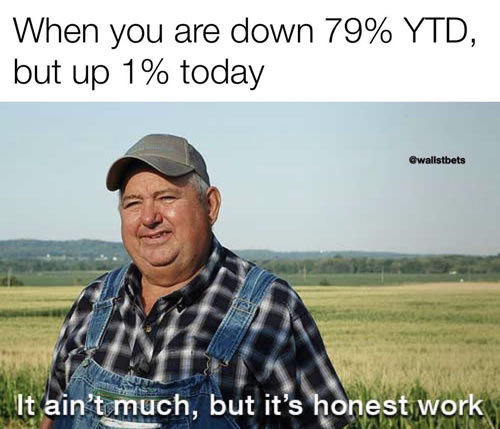
Secret to Professional Trading
Thor and I did some amazing things together this morning. I went long on most of the Stocks in Play, including AMD, NIO, and SOXL. Thor shorted everything he traded (SPY, BABA, and AMD). Both of us were profitable and happy while we were trading in the same market and at the same time. You can watch our recap here to learn from folks in their pjs about what is the secret to professional trading. You’ll see how two traders can go in different directions in the market and yet both stay profitable. The secret is explained in our video. Hint: it’s based in risk and trade management rather than the direction of the trades you take.
While I am trading both directions in the market, Brian is traveling the world and is currently in Machu Picchu, Peru.

Today’s Global News and Financial Recap
As I am writing this, the market has bounced around 2% and is ripping higher. In this kind of market condition, no one knows how each day will end, but investors on Wall Street definitely have a risk-on appetite today (for now at least). Global stock markets have already overpriced the risk of a recession compared to other asset classes such as government bonds and bond markets, according to JPMorgan Chase & Co. Their strategist, Marko Kolanovic, reckons the probability of a recession over the next six to twelve months remains low. Adding more uncertainty to his deal, Elon Musk declared he won’t proceed with his $44 billion takeover of Twitter Inc. unless the social media giant can prove bots make up fewer than 5% of its users. Musk’s latest online noise complicates an already chaotic deal, potentially one of the largest acquisitions the internet industry has ever seen. He recently butted heads online with Twitter CEO Parag Agrawal over the way the social media giant accounts for bots, and left him a poop emoji. Many, including myself, speculate Musk may try to lower the price or even walk away.

Not-so-Stable Coins
Bitcoin edged above $30,000 today in cautious trading as the fallout over a collapsed stablecoin continued to keep sentiment in check. Deus Finance’s DEI token has lost its 1-to-1 peg to the dollar, becoming another failure of an algorithmic stablecoin. TerraUSD stablecoin’s implosion may bring about something just as noteworthy: the death of a major blockchain. Terraform Labs co-founder Do Kwon offered another proposal to revive his troubled Terra blockchain by getting rid of the failed TerraUSD stablecoin and revamping the project into a new network. Ether, the second-biggest cryptocurrency by market cap, could drop another 80% or so, according to chart watcher 22V.

At Bear Bull Traders…
For Tuesday Strategy, commencing at 8pm ET, Jarad and Peter will be presenting a webinar entitled: Understanding the Fundamentals of the Market. They will walk you through the various cycles that US stock markets typically follow. From daily cycles through to annual cycles, they will show you the major trends and discuss the unique events that you can keep an eye out for in your own trading.
For Wednesday Psychology, please join me at 8pm ET for a discussion on my own journey through learning about the importance of trading psychology.
And Finally…
As you all know, now that the Fed is raising rates, the meme stuff and crypto and growth stuff like IWM and QQQ are getting crushed the hardest. I am asked why a lot. What’s the big deal if the Fed Funds rate goes from 0.25% to 0.8% or whatever? How does that change the value of Terra or a digital ape? Of course, the Fed Funds rate alone actually doesn’t matter. The big risk-taking appetite of investors, and the rate hikes, while both important, are only a part of it. They are not the only reason. During the dotcom bubble, the Fed’s rate was around 5%! But we still saw the huge run in Nasdaq regardless. The Fed started hiking rates again in 2004, but the housing boom just kept going. In fact, a lot of the worst housing assets were created deep into the hiking cycle, around 2006, when the Fed had brought rates back up to 5%.
What matters is that the risk appetite of investors has changed, and they do not see a bright future for the economy, especially with persistent inflation. Unlike the last ten years, when it was clear that the Fed or Washington policymakers could easily boost the economy when it started to slow down, there isn’t an equivalent easy solution to deal with high inflation that is persistent. If anything, Washington may even start to take political positions over inflation such as the President did with Amazon founder Jeff Bezos. In a highly global economy that doesn’t play by US rules, including Russia overnight stopping gas and electricity deliveries to the EU, and China forcing people to lockdown for two months, it’s not as easy to stop inflation like you can do with a recession. The path going forward thus looks super rocky. Sure, the rate hikes are one factor contributing to the downturn, but the bigger story is that business cycle investors are in risk-off mode.
If you would like to read more about the risk-on/risk-off mode for investors, you should subscribe to Ardi’s newsletter here, which covers options trading and macroeconomic events.
To your success,
Andrew
PS: If you have not already, I urge you to try out our free web-based trading simulator at stocktradingsimulator.com. It’s conveniently available 24/7, whenever you have time to practice honing your trading skills.




